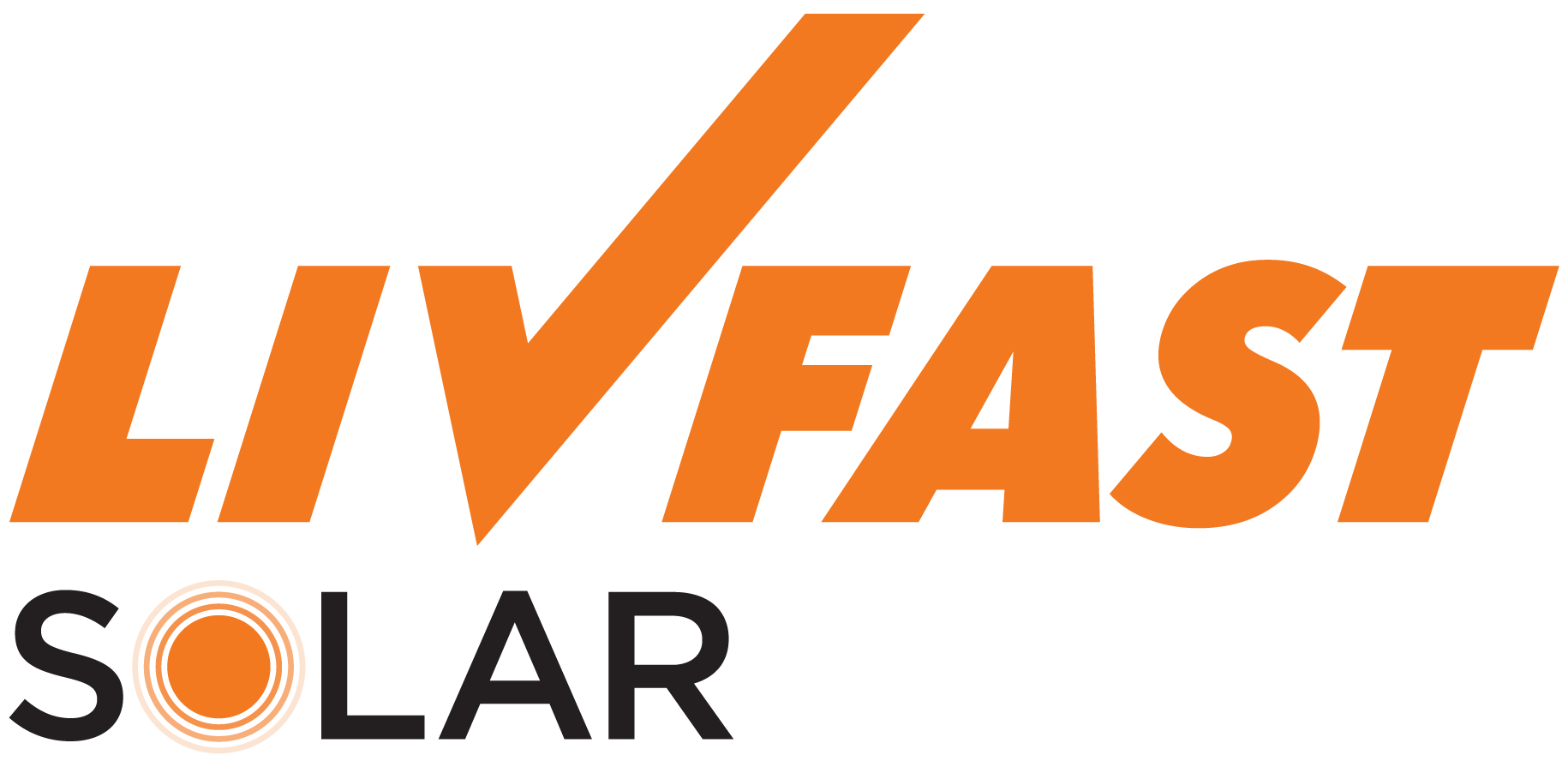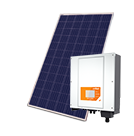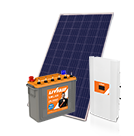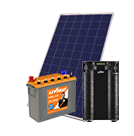Power From
The Infinite Sun
OUR SOLUTIONS RANGE
Savings in your Electricity Bill Upto 100% is just one of the reasons!*

GI single/3 phase
A Solar Grid-Interactive (GI) is a solar rooftop system connected to the local grid of your home. This type of solar rooftop solution consists of a grid-interactive solar inverter and solar panels designed for areas with zero power cuts or a 24x7 power supply. It sends the excess solar power generated back to the local grid through a net meter for faster savings and reduced electricity bill. It is one of the best On-grid or grid-tied solar technology as it offers hassle-free and faster installation, low maintenance and better savings.

GIH
A Solar Grid-Interactive Hybrid (GIH) is a solar rooftop system which offers the best performance of a grid-tied and off-grid solar power system. This type of on-grid solar rooftop solution consists of a grid-interactive hybrid solar inverter, solar batteries and solar panels. It is designed for dual purpose as it sends the excess solar power back to the connected local grid through net metering and offers emergency backup to run critical loads during the time of power cuts.

HKVA OG- MPPT and PWM
The Off-grid solar power technology is designed for self-sustainability in the sun energy production without any utility grid. It is based on two types of solar charging methods- PWM and MPPT.
PWM (Pulse Width Modulation) is used in solar charge controller which allows quick charging of the solar batteries by drawing as much current as the PV panel/array can produce to reach the desired target voltage and then disconnects automatically to ensure the battery voltage remains constant. It works best only when the nominal voltage of a solar array matches to that of a battery bank. PWM solar charge controllers are cost-efficient but offer less flexibility and efficiency in solar power generation.
MPPT (Maximum Power Point Tracking) is used in the solar charge controller which does not require the nominal voltage of solar panels to be similar to the battery bank. This solar charging technology converts a higher voltage PV power to the lower voltage charge power of a battery bank. It offers 30% more efficiency and flexibility to run DC loads than PWM but comes at a higher price.
FAQs
- What are the main equipment that are required to generate electricity from Solar?
The essential equipment that are required to produce electricity from the sun are as follows:
- One or more Solar Panels
- Charger Controller or Inverter
- Batteries (if storage is required)
- How many solar panels do I need to generate appreciable electricity?
The requirement of solar panels depends on application and load profile. As a thumb rule, for Grid-Tie solutions, solar panels should have a rating that is 20 % more than the inverter AC rating. For Off-Grid solutions, panel rating shall be based on day as well as night kWhr consumption. Please refer our solar calculator to check the sizing of your solar system.
- Why is a Charge Controller required?
A charge controller regulates a battery’s SOC, providing full power when necessary and reducing the charge when the battery’s SOC is at sufficient levels. This is important for maintaining the state of health of the batteries installed.
- How many types of Charges Controllers are available?
There are two types of charge controllers that are available: PWM stands for “Pulse Width Modulation” and is basically a 3-stage charging cycle type controller. Most of your DC applications use this technique for lower power ratings typically up to 2 KVA.
- Do I need a Power Inverter?
If it is not used, you will not have 120 VAC and will have to use battery power alone. This might be acceptable in a small RV or cabin, but not for normal AC appliances.
- What are the differences between 12, 24 and 48 V solar inverters?
This refers to the battery bank voltage. The main consideration is that at higher voltages the current produced is low so that you may use lower current rated systems such as wires that connect your PV array, your battery bank, inverter and/or charge controller.



